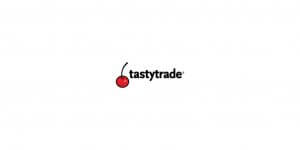Retail banking lags behind as the FX industry totally leads user experience
For the first time ever, the authorities have chastised major banks for taking too long to adopt open banking. Now its the FX industry’s chance!

Retail CFD and Forex trading may now be considered a mature market, but the infrastructure that enables the widest possible dissemination of these products continues to evolve – and it’s the quality of service to end-users and intermediaries that’s very much front of mind.
There has been a definitive drive toward following the innovative path paved by the FX industry by traditional banks, which in leading economic regions such as the UK and North America, have committed massive resources toward developing advanced platforms for retail banking customers to utilize in order to manage their financial and investment products at a time during which customer retention relies on the user experience just as much as the quality of products being provided.
In today’s retail banking environment, electronic trading and self-management of investment products is just as vital as the reputation and length of time that a bank has been established, one only has to observe the massive market penetration of new entrants such as Revolut and Transferwise, both of which are not banks, but rival the mainstream banks for every day payment and investment services.
Banks have always, especially in the UK and the US, had their own infrastructure. They have always employed a strategy of maintaining vast in-house technology departments which only outsource to professional services giants such as Accenture and Fujitsu-Siemens which provide infrastructure architects who reside onsite for several months at a time at a cost of $2000 per day, alongside long term employed systems engineers.
Whilst this fosters safety and security, as well as allows banks to be in control of their own environment which is vital, it is a juggernaut by comparison to the lithe and lean FX business, which can develop new systems and trading environments that form the leading edge of the entire financial business, within a matter of months.
Today, Britain’s authorities have begun to focus on the dawdling nature of the banks which lead the market in terms of financial services globally, for exactly this problem – taking far too long to deliver open banking systems.
The Competition and Markets Authority (CMA) has today reprimanded five banks for dragging their heels over the delivery of Open Banking functionality within their mobile apps. The regulator has issued Directions to five of the nine big banks mandated to open up their data to third party vendors.
The five banks – Bank of Ireland, Danske, HSBC, Lloyds Banking Group and Santander – were found to be mainly in breach of deadlines for app-to-app redirection functionality, forcing users to rely on desktop-only data sharing, and the enforcement Directions specify actions that the banks concerned must take, including the employment of external professional consultants to validate their plans and monitor their progress.
Commenting on the CMA Directions, Trustee of the Open Banking Implementation Entity (OBIE), Imran Gulamhuseinwala, says: “While we are aware that the Open Banking programme has ambitious and challenging timescales, it is disappointing that some banks have needed more time to deliver some important new Open Banking functionality to their customers.”
Commenting on the news, Samantha Seaton, CEO, Moneyhub says the failure of banks to meet their obligations is stunting the transformative potential of Open Banking.
“While there is huge appetite among the fintech community to transform and revitalise the user experience, some high street banks are dragging their heels and holding back progress,” she says. “Nearly every bank now sees the greatest engagement with customers through mobile banking apps that gives immediate access to data and the ability to transfer money, even set up new payments with just a thumb print to confirm approval. It is therefore disappointing that many banks have been slow to support ‘app-to-app’ consent for third parties. In fact, some have instead opted to provide support only with their desktop based online portals in the first instance.”
Interestingly, this is the first notable time that a government department has got involved in reprimanding financial services providers for slow delivery of open banking applications, demonstrating that open banking is the way forward.
Just a year later, the firm released its new developer portal. The portal provides technical documentation, reference guides, sample code and interactive tools for many of the technologies which in combination underpin Saxo’s Open Banking initiative.
“Open Banking has become a buzz word in the financial industry, but Saxo Bank’s multi-asset trading infrastructure is unique in actually making it possible to tap into almost any part of the value chain using a combination of APIs and technologies. Partnerships and collaboration are key to Saxo Bank’s business model as a facilitator, so we wanted the new portal to be a natural resource for developers no matter what case they were trying to fulfil” said Mr Johansen at the time.
Sometimes all requirements can be realized by a single API. For example, it is possible to write and integrate a complete trading platform via the SaxoOpenAPI, and if you are just looking for best in class liquidity and execution services, it is all available through our FIX technology. You may even combine the two technologies and use our FIX connectivity liquidity provision while at the same time use OpenAPI to source balance and margin information into your proprietary application or directly into Microsoft Excel.
Some three years ago, FinanceFeeds met Saxo Bank senior executive Benny Boye Johansen, who oversaw the development of the firm’s OpenAPI system.
During a meeting with Mr Johansen at Saxo Bank’s global head office in Hellerup, Denmark, he said “OpenAPI is one part of the larger Open Bank Vision”: A quick screenshot of what Mr. Johansen explains as the Saxo Open Bank Vision. On the left screen you may discern the hub in the middle illustrating the Saxo Bank trading engine, and the boxes around it illustrating the various types of integration technologies available.
Mr. Johansen elaborated on functionality. “Every application is identified by an Application Key. When the user starts the application, she is redirected to our security system, where the user must log in. Through this process we know who the user is, and which application she is using. If the login is successful, the application now has a token. It can use this token to access any of the publicly available OpenAPI end points.”
“The Saxo Bank OpenAPI is a modern WebAPI based on REST principles. All endpoints support traditional Request-Response, but we have also implemented streaming to ensure better performance and lower latency for things like quotes, position updates and trade confirmations. For the streaming we part we use SignalR technology to ensure that it works, also over bad network connections.”
“Everything you see in the new SaxoTraderGO trading platform is accessed and executed via the OpenAPI but not everything is yet available to third party developers” said Mr. Johansen. Currently we are focusing on the endpoints necessary to support a good trading experience. As we get comfortable with the reliability and scalability of this section of the API, we will gradually extend the functionality on offer.”
“It is important to understand that this is our own API and there is one API only. We do not use an internal API for our own systems and provide a different one for clients. The functionality of the entire SaxoTraderGO trading platform goes through this API.” With OpenAPI we really are “eating our own dog food” quipped Mr Johansen.
Almost two years ago, Richard Elston, Head of Institutional at CMC Markets in London explained to FinanceFeeds “Historically, those institutional intermediaries wanting to deliver a third party service had one of two options. Either they looked for a white label provider that offered a complete ‘broker in a box’ solution, or they sought out an Application Programming Interface – API – that allowed a third party execution platform to be plugged into their existing technology.”
In recent years, some of the biggest players in the sector have realised there’s a significant benefit to be had in pulling these two disparate systems together. The presence of scale is good as internalising flows improves liquidity and keeps costs down, it’s the optimal solution for risk management and it ensures the fastest possible execution speeds.
“To this end, CMC Markets has invested in excess of £100 million in its proprietary, Next Generation technology. Intermediaries can be assured that whether they are just looking for liquidity or an entire turnkey solution, they’re going to be drawing from exactly the same flow.”
“Which of the two solutions a client takes depends on a number of factors. There’s no doubting that a White Label is a far more complex proposition to execute, but it’s a valuable way of getting market exposure where intermediaries already have a strong brand and geographical presence. These clients have a very high expectation of what we will deliver both in terms of an intuitive interface for the end user, as well as seamless downstream technology” said Mr Elston.
Hargeaves Lansdown’s self-developed Vantage service, which was developed in-house, offers customers a wide selection of option choices such as spread betting and CFDs, ISA’s, SIPPs as well as corporate and government bonds, ETF’s, Investment Trusts. The company considers its strong customer service and safety of client funds to be top priorities, as demonstrated to FinanceFeeds by the company’s senior executive Danny Cox during a meeting at Hargreaves Lansdown’s Bristol head office in 2015.
“Trading in the instruments that the company provides are manageable via the Vantage system which holds different types of investments together in one place with one valuation and dealing service, and whilst CFDs and spread betting are very much part of the firm’s product range and are offered under the HL Markets brand, Hargreaves Lansdown has 14% of the UK’s market share in ISAs” said Mr Cox.
These are just some innovative and clearly leading examples, however the entire FX industry has majored on mobile user experience and has understood for many years that it is the way toward giving clients better interaction with trading companies and to increase volume and client loyalty.
It is clear that user-orientated technology and interfaces that engage financial customers properly is a vital area of importance, and now with the UK government getting involved in actually ticking the major banks off for being well behind the non-bank sector, it is time for FX firms and their service providers to major on the importance of it and continue to lead the way, potentially gaining some disgruntled bank customers on the way – and let’s face it, these are excellent customers!









